Caracal or wild cat
 Bashny.Net
Bashny.Net
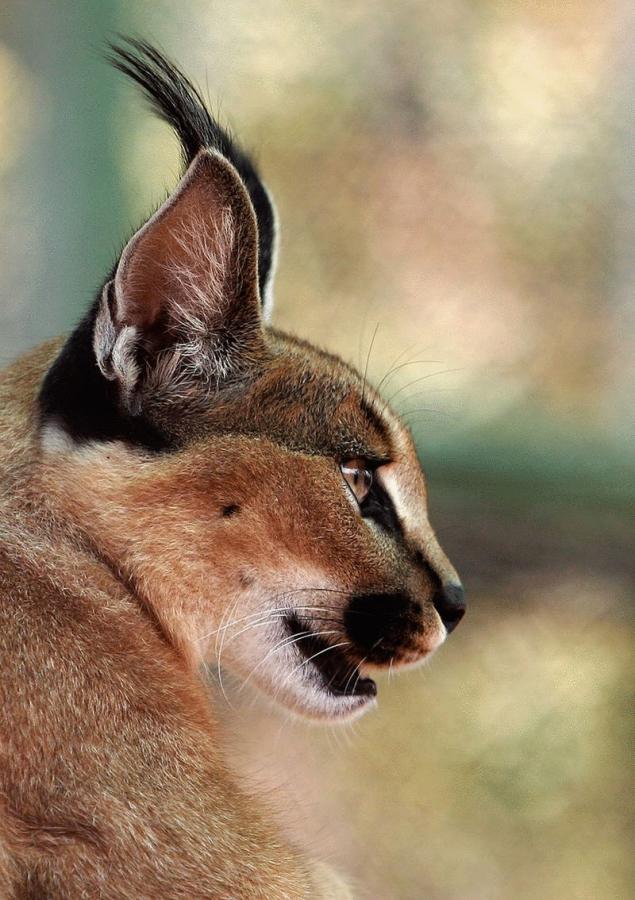
Caracal, steppe lynx, or (lat. Caracal caracal) is a predatory mammal of the cat family. For a long time Caracal related to bobcats (Lynx) in which it is similar in appearance, however, a number of genetic variations identified in a separate genus. Despite this, the Caracal is closer to the bobcats than other cats.
The name "Caracal" comes from the tour. karakulak "black ear" as the rear side of the ears of these cats are black. In North Africa, the Caracal is also called the Barbary trot.

Looks like a lynx, but smaller, slimmer and with a monochromatic color.
The body length of 65-82 cm, tail — 25-30 cm, height in shoulders about 45 cm; weight — kg. 11-19 Ears with tufts (up to 5 cm) at the ends. On the feet developed brush of coarse hair for easy maneuverability on sand.
The fur is short and thick. The color reminds of a North American Cougar (Felis concolor): sandy or reddish-brown upperparts, whitish underparts; sides of muzzle black markings. Brushes and outer side of ears is black. Very rare black caracals-melanin.
Although outwardly similar to Caracal lynx, morphologically it is closest to the Cougar. Close to the African Caracal and Serval, to which it cross-breeds well in captivity.
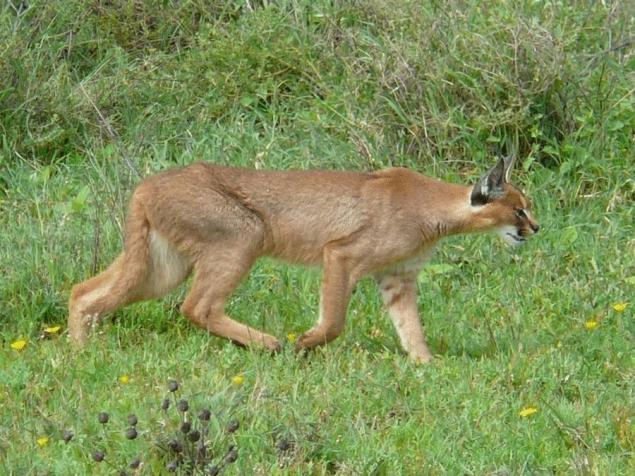
Found in the savannas, the deserts and the foothills of Africa, in the deserts of the Arabian Peninsula, Asia Minor, Central Asia. In the CIS is small: it is found in the deserts of southern Turkmenistan, on the Caspian sea coast comes to the Mangyshlak Peninsula, in the East sometimes appears in the Bukhara region of Uzbekistan.
Caracal leads nocturnal, but in winter and spring appears and day. Shelters serve him crevices and holes of porcupines and foxes; sometimes they are used for several years. Males occupy vast territory, and the territory of females, more modest, are on the periphery.
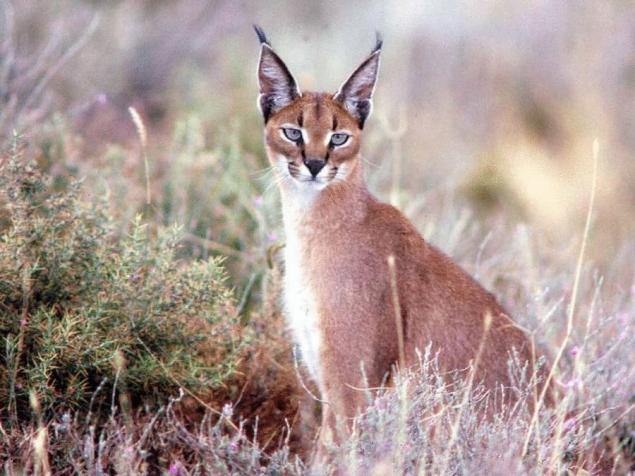
Although the Caracal has long legs, a long run he can't, so it hunts, concealing the victim and overtaking its large (up to 4.5 m in length) jumps. With extraordinary reaction speed and very sharp retractable claws, the Caracal is able to snatch a few birds taking off from the pack. But the main food they are rodents (gerbils, jerboas, ground squirrels), rabbits-Talai, partly small antelope, in Turkmenistan — gazelles. Sometimes produces hedgehogs, porcupines, reptiles, insects, small wild animals, like foxes and mongoose, young ostriches. Can pluck poultry, attack lambs and goats. The Caracal is capable of a long time without water, obtaining a fluid from eaten prey.
Like leopard, Caracal pulls a dead game in trees to hide it from other predators.
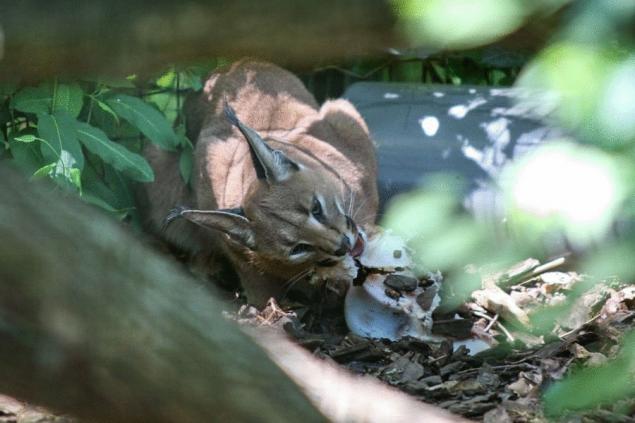
Reproduction occurs year-round, the female can have up to three partners. After pregnancy 78-81 days 1-6 cubs are born. Until they reach the age of one month female once a day and transports them from one den to another. In 6 months the young leave the mother caracals and settled in their possessions. Become sexually Mature at 16-18 months.
Caracals are easily tamed. In Asia (India, Persia) hand-caracals hunted rabbits, pheasants, peacocks and small antelopes. In ancient times such hunting was very popular in the East; in India, the Caracal is called "little Cheetah" or "Gepard for the poor", because unlike cheetahs, Caracal caught and kept poor people. Now such hunting is rare.
In Africa, especially the South, Caracal is quite normal and is considered a pest. There is a special culture of hunting for Caracal: it beckons with devices that mimic the cry of a wounded rabbit or mouse, and shoot at night under lights. In addition, in South Africa, caracals are used to ward off birds (mostly, Guinea fowl) from the runways of military airfields.
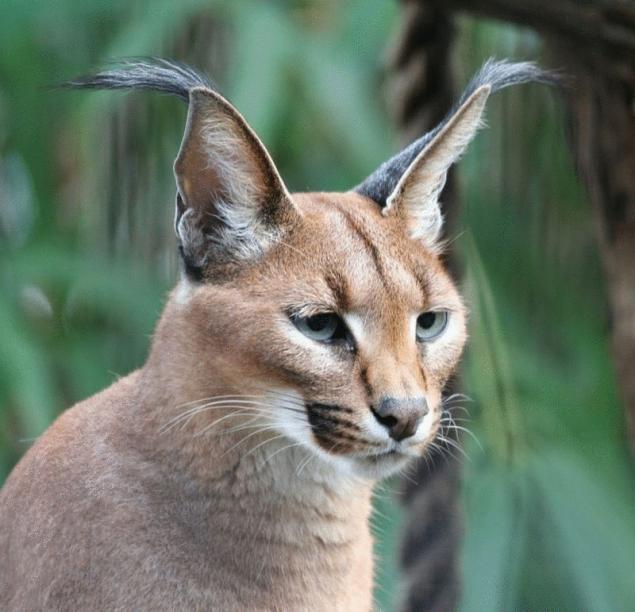
Source: /users/104
Tags
Africa
fauna
fur
cats
Asia
nocturnal
the Caracal
steppe lynx
a predatory mammal of the cat family
lynx
ears with tassels
Cougar
CIS
See also
Interesting facts about the unusual animals of the world
The Fennec Fox is a small Fox
Quokka or short-tailed kangaroo
Singles in the tundra
29-year said Patrick the Wombat in Australia
The smallest mammal on Earth
Scientists have solved the mystery of the kiwi bird
The country where live the most healthy people















